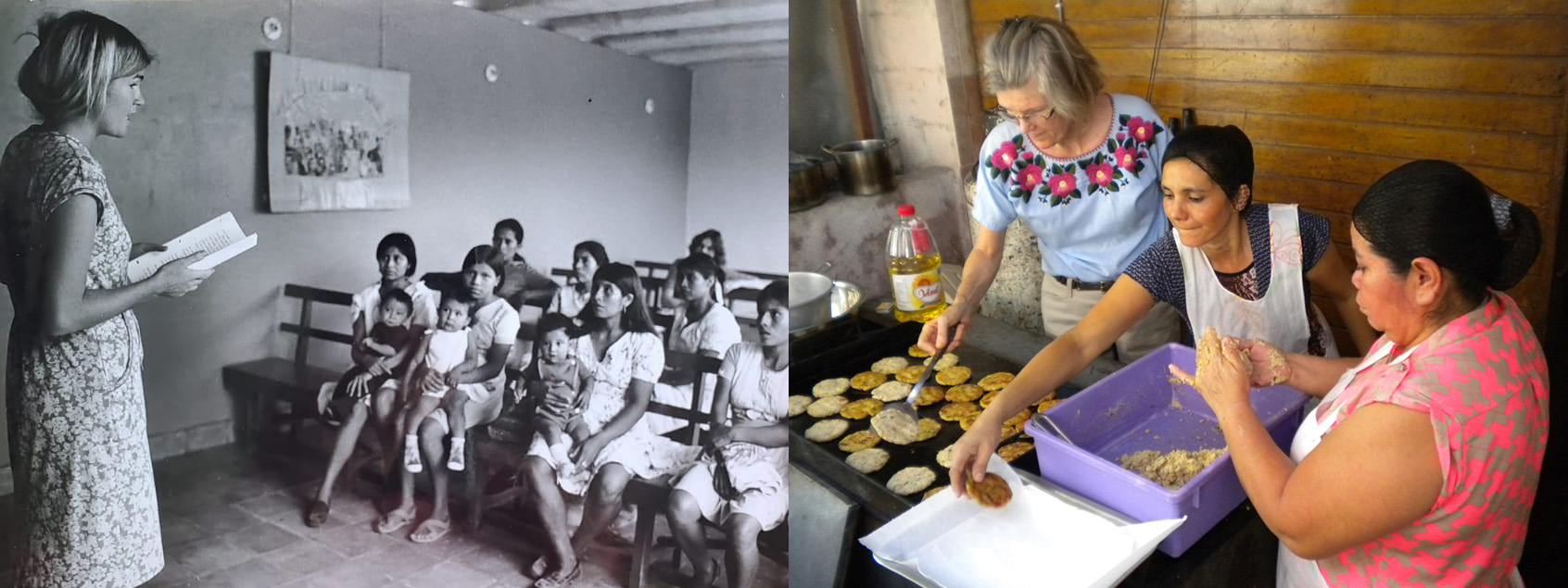
Ann Greig, left, giving a nutrition talk as a Peace Corps volunteer in El Salvador in 1978. Right, as a Maryknoll lay missioner in 2018, creating soy products with her team at her soy program.
People sometimes refer to Maryknoll Lay Missioners as the “Catholic Peace Corps.” Both the Peace Corps and Maryknoll Lay Missioners provide the opportunity for people from the U.S. to share their gifts and expertise overseas, accompanying people at the margins who have fewer resources. Both also emphasize the importance of engaging and partnering with the local people.
However, there are also many differences between the two organizations, in part because the Peace Corps is a secular, government agency, while Maryknoll Lay Missioners is a Catholic sending organization.
So what do people say who have actually served both in the Peace Corps and as Maryknoll lay missioners? We asked the seven current Maryknoll lay missioners who have had their first experiences of international service through the Peace Corps. Most of them served in the Peace Corps in the 1970s and 1980s in Africa, but when they were ready to return overseas, they looked to Maryknoll Lay Missioners to fulfill their desire to serve.
Many said that even though the Peace Corps is a secular, governmental organization, their time as volunteers was deeply meaningful to them and made them more attuned to the spiritual side of service and accompaniment. It has continued to inform and shape their lives — including their later decision to join Maryknoll Lay Missioners.
John O’Donoghue
John O’Donoghue, who is currently serving as a Maryknoll lay missioner in Bolivia, recalls, “I always wanted to do some service overseas and felt that a two-year contract with the Peace Corps would be a good place to start. I was 29 years old when I joined in 1982.” John served with the Peace Corps in Lesotho, a country entirely surrounded by South Africa.
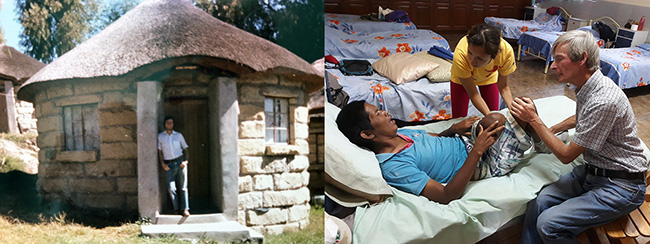
John O’Donoghue, left, with the Peace Corps in Lesotho in 1983, and, right, serving at the Missionaries of Charity’s shelter in Cochabamba in 2019.
The Peace Corps set him on a lifelong path of overseas service, and John subsequently worked in India, Sri Lanka, Malawi, Nigeria, and Sudan with diverse organizations such as Mother Teresa’s Missionaries of Charity, Save the Children, and the U.N. World Food Program.
John said he joined Maryknoll “at the tender age of 53. I wasn’t sure if Maryknoll Lay Missioners was right for me, but a strange thing happened: The idea of joining Maryknoll would not leave me alone, and it was very persistent. People in the religious field say, that is the sign of a ‘calling.’ Anyway, I joined, and here I am 14 years later, still with Maryknoll Lay Missioners.”
John, who years ago worked directly with St. Teresa of Calcutta, notes, “It is somewhat ironic that I have now teamed up with the Missionaries of Charity again.” Through Maryknoll Lay Missioners, he works at their men’s shelter in Cochabamba.
Like John, other missioners who completed work in the Peace Corps also later sought out faith-based organizations with whom to continue their overseas calling.
Brenda Seymour
Brenda Seymour, who was serving with Maryknoll Lay Missioners in Kenya before she temporarily returned to the U.S. because of COVID-19, said that her Peace Corps experiences from 1977 to 1979, also in Kenya, were formative years for her life. During her two years with the Peace Corps, “I was so enthusiastic about doing a service, but I didn’t really have the idea of mission in my head yet.”
While in the Peace Corps, she lived in a majority Muslim town on Kenya’s Indian Ocean coast and shared housing with a Muslim family. She said that she learned a lot from her Muslim neighbors and was impressed by their faith and community life.
Her Peace Corps experience, Brenda said, taught her “that it is about more than service, it is about engagement with the people that I was with. I learned so much from them.” She also worked with the Volunteer Mission Movement in Uganda during the 1980s and at two schools in Honduras in the 1990s.
After “semi-retiring” from teaching English as a Second Language in 2018, Brenda decided to look into different possibilities in mission, and Maryknoll Lay Missioners was the right fit for her. Especially during this very divisive time, she said, “I wanted to contribute to the justice and peace in the world…. I wanted to be part of engaging and connecting and working with people and mutually supporting each other.”
Gabe Hurrish
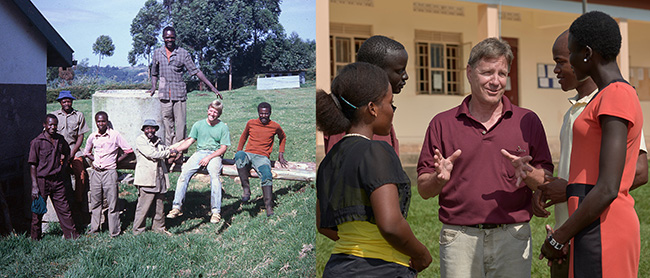
Gabe Hurrish, left, installing a water tank with the Peace Corps in Kenya in 1985. Right, helping to train teachers in South Sudan, with Maryknoll Lay Missioners in 2018.
Gabe Hurrish, a Maryknoll lay missioner in South Sudan, said he “learned how to pray and trust in God as a Peace Corps Volunteer.” From 1984 to 1986, Gabe worked on water projects for the Peace Corps in Kenya. Since then, he has lived and worked overseas with different relief, development and mission organizations for almost 30 years, mostly in Africa.
“I almost never go to a place that I have planned going to,” said Gabe. “There is something like an invisible force — I call it the Holy Spirit — guiding me to these places. It’s only in retrospect that I can see why I was sent to a particular place.”
He had “bumped into” Maryknoll missioners during his various mission and non-governmental organization assignments overseas. “I knew that they had a good program and that they prepared their people well, much better than many other volunteer and lay mission organizations I have encountered.”
In January 2018, Gabe started Maryknoll Lay Missioners’ new commitment in South Sudan, where he has been working with Solidarity with South Sudan.
Kevin and Marilyn McDonough
Kevin and Marilyn McDonough met while serving in the Peace Corps in the Gambia from 1973 to 1975. After getting married, raising four sons and working in business and nursing, they wanted to do something meaningful with their retirement.
They decided to reapply to the Peace Corps, but “one Sunday morning,” Marilyn said, “I was reading the Maryknoll magazine and again saw the ad for lay missioners.” They looked into it, and “we were both impressed by the warm reception we received. We felt right away that this was part of God’s plan for us.”
Both Kevin and Marilyn say the Peace Corps taught them a lot about simple living, learning about other cultures and peoples, and openness to learning new ways of doing things. They appreciated the longer training and language preparation that Maryknoll Lay Missioners offered when they joined in 2018.
Peace Corps placements are more specific, they said, while those of Maryknoll Lay Missioners are more flexible. They also appreciate the greater organizational support and the community with other lay missioners as well as the larger Maryknoll community.
“We are fortunate and have been blessed beyond measure,” said Marilyn, “so God has called us to give back to others.”
Kevin and Marilyn are serving with Maryknoll Lay Missioners in a variety of ministries in the Diocese of Musoma, Tanzania. Like Brenda, they temporarily relocated to the U.S. due to COVID-19, but they just returned to Musoma.
Kevin noted one big change for him and Marilyn since their Peace Corps days. “We have an advantage now that we did not have before: In Tanzania, elders are respected!”
Steve Veryser
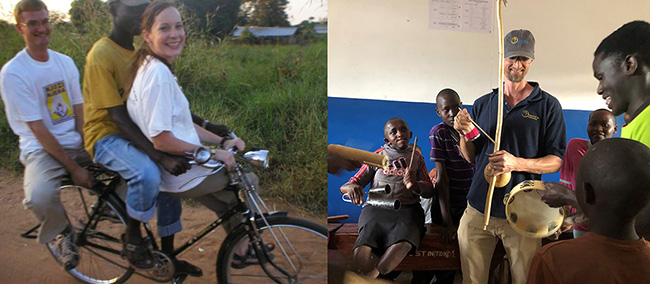
Steve Veryser, left, with the Peace Corps on a bicycle taxi in Tanzania in 2004. Right, at St. Justin Centre for Children with Disabilities with Maryknoll Lay Missioners in 2019.
Steve Veryser also met his wife, Loyce, while serving as a Peace Corps volunteer in Tanzania from 2003 to 2006. Loyce is a Tanzanian teacher who was working at a school near where Steve was also teaching. Steve and Loyce are now both Maryknoll lay missioners living and working in Mwanza, Tanzania. They have three children.
“I found the Peace Corps to be very intentional about integration in the local community and the ‘host’ culture. The assignments were simple, but challenging and in areas of clear need,” Steve said, citing his experience teaching math and physics in a school where students had missed years of both subjects before he got there, for lack of a teacher.
The remoteness of placements in the Peace Corps and the minimal resources they receive often lead volunteers to a radical reliance on their local community. Steve said his experiences gave him a “completely new worldview through the eyes of Tanzanian culture and history. In terms of my faith, the Peace Corps was certainly a deep and challenging time, but I was generally on my own through it. I certainly didn’t have any experienced mentor-types that I could turn to like I do now in Maryknoll Lay Missioners.”
Following his time in the Peace Corps, Steve worked for another 12 years with non-governmental organizations throughout East Africa until “finally getting around to” (his words) joining Maryknoll Lay Missioners, many of whom he had known for years.
With highly varied experiences in the field — including in remote places and even conflict areas — he felt he had a lot to offer in order to support others in navigating similar such experiences and facilitating their service in areas of need in communities. Steve now serves as Maryknoll Lay Missioners’ regional director for Tanzania, Kenya and South Sudan.
Loyce was encouraged to have her lengthy service commitment as a math teacher recognized as a mission role. The whole family of five participated in the 2018 Orientation and Sending at Maryknoll. They have been grateful for the support of the community of missioners and especially having other families with children that Abigail (12), Justin (12) and Claire (9) have had fun hanging out with and in school together.
Ann Greig
Ann Greig served in the Peace Corps in El Salvador from 1977 to 1979, and after a couple of years back home, she joined Maryknoll Lay Missioners in 1982 and worked for 10 years in Peru before returning to El Salvador in 1993. With 38 years under her belt, Ann is now the longest-serving active missioner of Maryknoll Lay Missioners. Since she helped co-found it in 1994, she has been leading the innovative “Health through Nutrition Soy Program” in San Ramón, El Salvador.
In the Peace Corps, Ann discovered that learning a language and culture takes time. “Working in the rural area and working with the base to do community organizing is a slow process, and the project or program that you are promoting may not be successful. I learned from my mistakes that you have to have a plan B and do not throw in the towel.”
She added that she also realized that two years was too short a period of time to have an impact in a foreign country. That’s why, when she decided to return to overseas service, “I very much liked the minimum time commitment of three and a half years that Maryknoll Lay Missioners had.”
During her first year with the Peace Corps in El Salvador, Ann worked as a regional nutritionist in San Vicente at the Ministry of Health. “It was a great intro to the country, and I worked together with a Salvadoran nutritionist and visited regional health clinics and hospitals. I could not have had a better way to learn about the nutrition reality while I learned the language and culture.” She later worked on special dietary needs in a hospital kitchen in Sensuntepeque in north central El Salvador and with Caritas in a nearby community.
In 1979, during her last year in El Salvador, tensions dramatically increased, eventually leading to civil war. “There were massacres, and people were starting to disappear and/or be killed,” Ann remembered. “Then a ‘state of siege’ was declared, and the Peace Corps sent us telegrams that forbade us to come to the capital and banned travel.” Although she finished her Peace Corps service in August 1979, Ann was unable to leave the country until November 1979.
“The Peace Corps is where my vocation started and when I started thinking about mission,” said Ann. What she had treasured the most during her time in the Peace Corps was her relationship with Salvadorans and experiencing the warmth and accompaniment of the people. That is what led her back to El Salvador the year after the conclusion of the civil war.
Being faith-based is the biggest difference Maryknoll Lay Missioners offers, Ann said. “And you also have incomparably more training that is very deliberate and well structured.” She also appreciates the strong support from and community with other lay missioners in the region.
After now 38 years with Maryknoll Lay Missioners, Ann joked, “I just forgot about the end terms of contracts. There is always so much else to do, that I just keep going.”

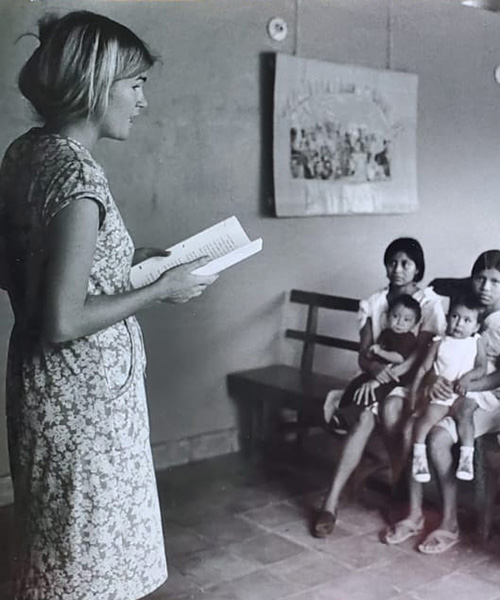

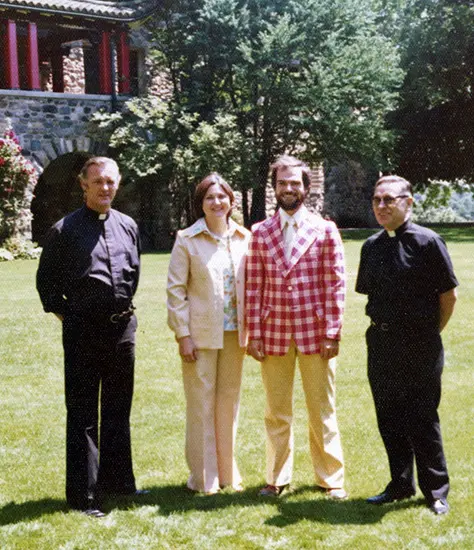
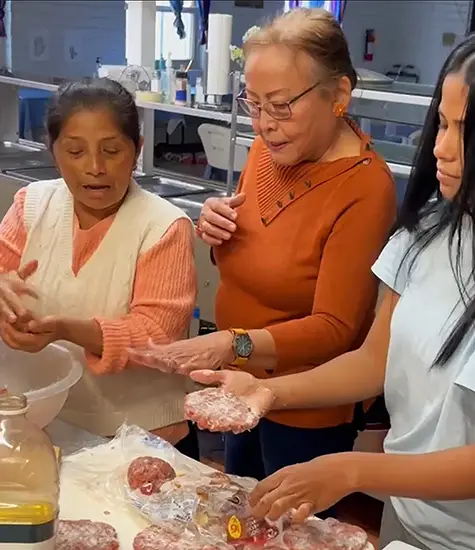
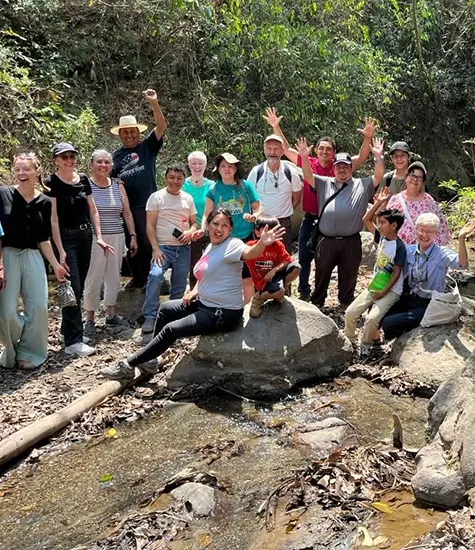




Great article!
Thanks Debbie for putting this together